Hebrew: איריס הארגמן, Arabic: السوسن، آحيلة الكلب
| Scientific name: | Iris atropurpurea Dinsmore | |
| Common name: | Coastal Iris | |
| Hebrew name: | אירוס הארגמן | |
| Arabic name: | السوسن، آحيلة الكلب | |
| Family: | Iridaceae, אירוסיים |

|
| Life form: | Geophyte | |
| Stems: | Rhizome moderately stout; 15-25 cm high | |
| Leaves: | Alternate, rosette, linear, glaucescent, falcate, entire, smooth | |
| Flowers: | Red, brown; 3 upright petals (standards), 3 large, pendent or spreading petals, (falls); Sepals have a broad yellow beard and a signal patch that is a deeper color than the sepal background | |
| Fruits / pods: | Capsule | |
| Flowering Period: | January, February, March, April | |
| Habitat: | Sand | |
| Distribution: | The Mediterranean Woodlands and Shrublands | |
| Summer shedding: | ephemeral |

Derivation of the botanical name: Iris, ιριϛ, ιδοϛ, rainbow; female messenger, announcer of the gods, the Greek goddess of the rainbow. atropurpurea, atro, black, sable, dark, gloomy; purpurea, purple coloured; meaning dark purple. The Hebrew name: אירוס, iris, transliteration from the scientific name.
The flowers offer no nectar reward. A number of species of medium-sized bees provide pollination services. Pollinators of Iris atropurpurea are night-sheltering male solitary bees, honey-bees and female solitary bees. Apis mellifera, the Western honey bee, is the most frequent diurnal visitor to Iris atropurpurea. Link: Iris Nature Reserve Netanya 2007 Link: Iris Nature Reserve Netanya 2008 Link: The Irises Dora Rainpool nature park, Netanya, January 26, 2012 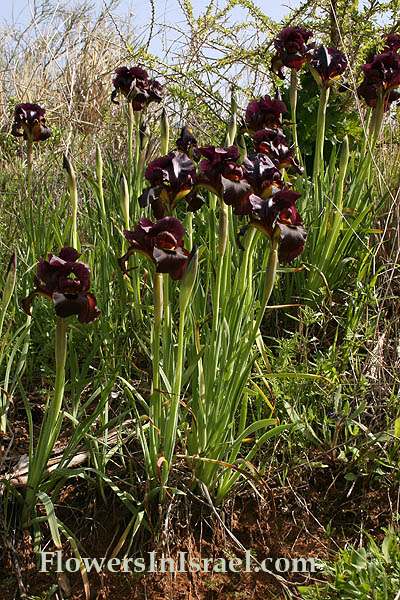
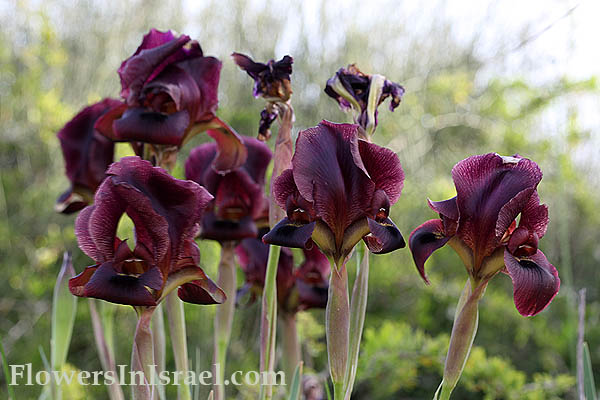

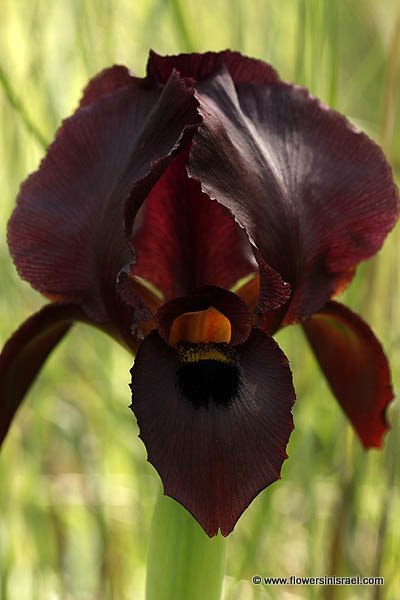
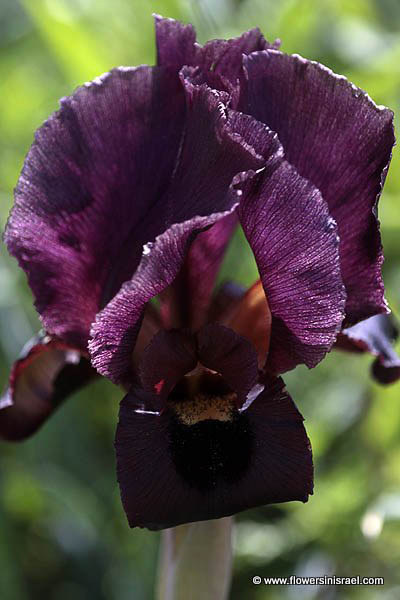
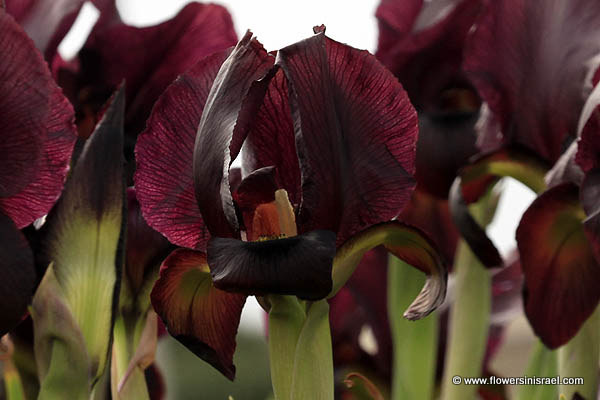
|